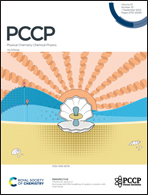Electric field control of magnetic states in ferromagnetic–multiferroic nanostructures
Abstract
Multiferroic oxides are considered as key elements of energy-consuming devices required for the development of scalable logic and information storage technologies. In this regard, understanding the mechanisms of magnetoelectric switching and finding the optimal way to switch magnetization by an electric field is of crucial importance. In this study, we develop a model for studying magnetic states in a nanoscale exchange-coupled ferromagnetic–multiferroic heterostructure subjected to the action of an electric field. Based on bias effects emerging due to the coupling between a ferromagnetic subsystem and an antiferromagnetically ordered multiferroic material, we explore the magnetic textures and the magnetization reversal processes in a ferromagnet. As the multiferroic material, we consider BiFeO3, where magnetic ordering and ferroelectric ordering are determined by the mutually perpendicular antiferromagnetic (L), weak ferromagnetic (M) and polarization (P) vectors. Application of an electric voltage removes degeneration from eight energetically equivalent positions of P|| 〈111〉, allocates the definite directions of vectors P, M, and L and as a consequence the unidirectional magnetic anisotropy axis in the reference ferromagnetic layer. Our study reveals the features of the magnetic configurations in systems of different geometries, with varying exchange and magnetic anisotropy, necessary to determine the optimal conditions for switching magnetic states in a multiferroic bi-layer by an electric field.



 Please wait while we load your content...
Please wait while we load your content...